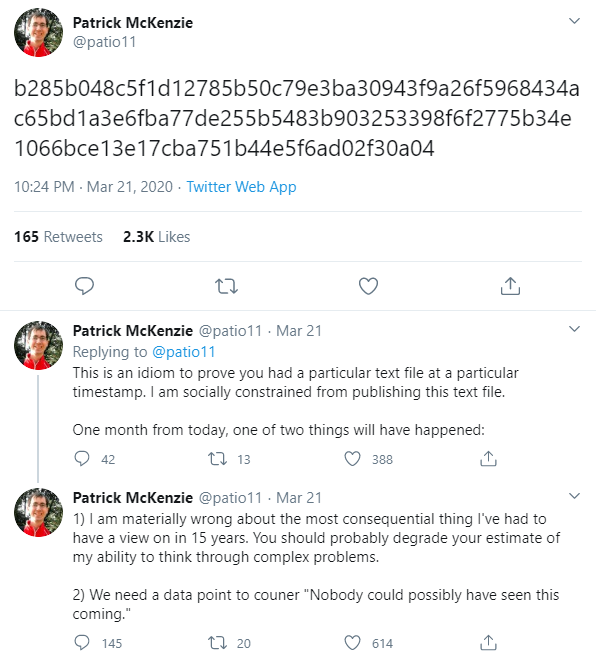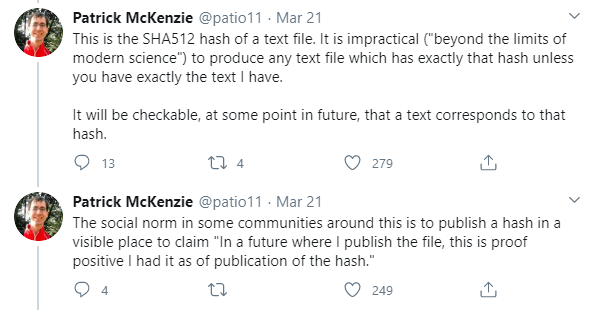Concept
Normally, when engaging in the marketplace of ideas, one provides two key pieces of information: the idea itself, and the identity of the contributor. There are a number of scenarios in which one may need to obfuscate one, or both, of these data.
Sharing an idea without revealing personal identity can be done fairly easily by posting anonymously. In many cases, however, it may not be possible to prove authorship after the fact if the need arises.
Similarly, there are cases wherein one may need make a claim or prediction, but is intolerant of the risk involved in doing so. Typical options in such cases are to either take on the risk, or to abstain from engaging altogether.
The ideal solution to both cases would be to indefinitely maintain the optionality of revealing any portion of the communication. Thanks to cryptography, this can be achieved securely and accessibly. Creating a hash of any portion of the communication allows the author to deobfuscate communications as appropriate, by simply providing text with a matching hash.
"Prove the Work"
In the context of blockchain, proof of work is the consensus mechanism used to validate transactions and add new blocks to the chain. It works by using a hash to verify the successful completion of work.
In this context, the "work" done is the creation of a new idea.
Safety
Prove the Work utilizes SHA-256 in generating tokens. Setting out to determine the original message from the token is an impractical enterprise.
Learn moreUse Cases

